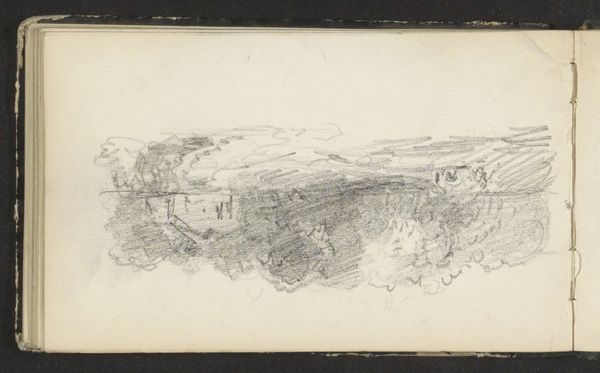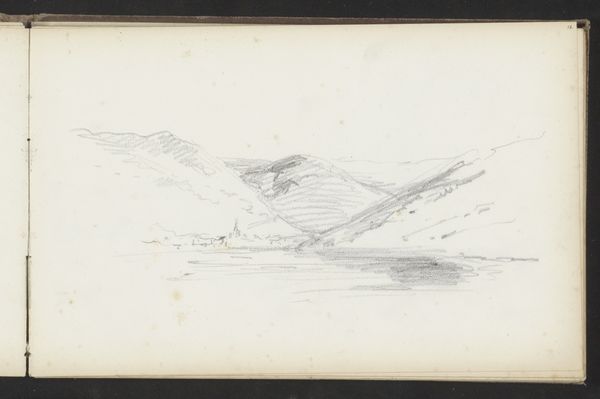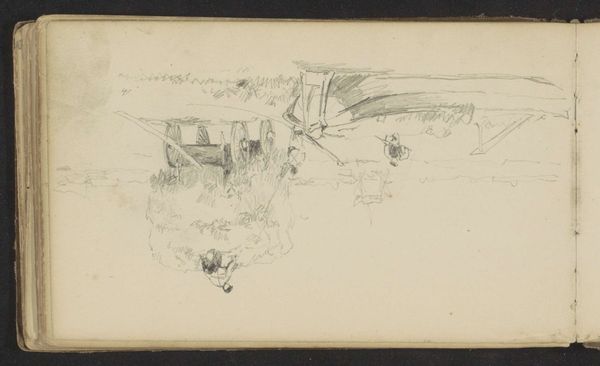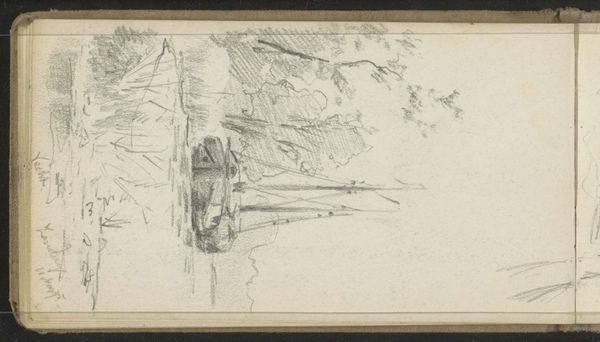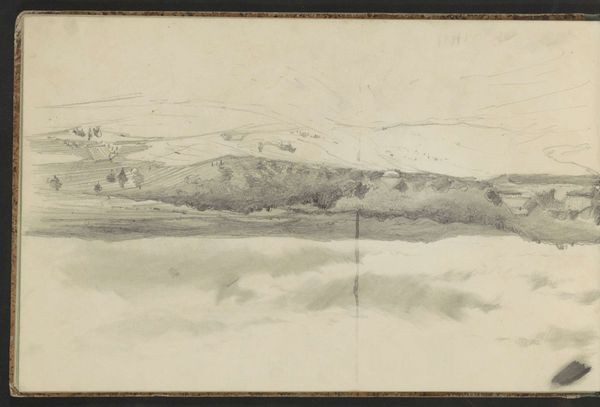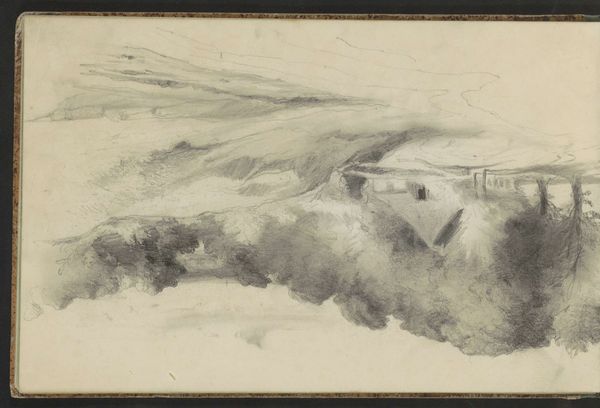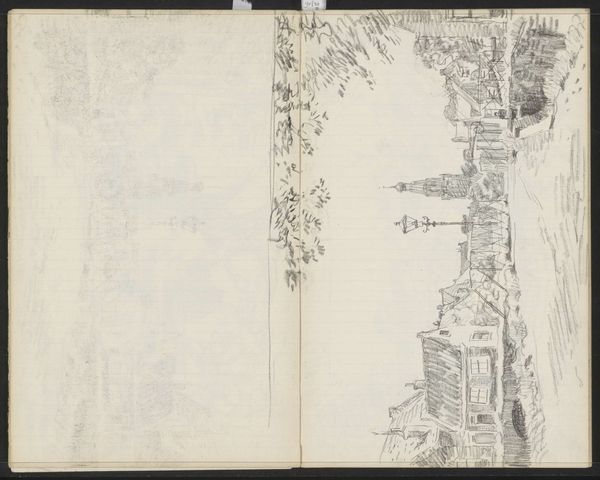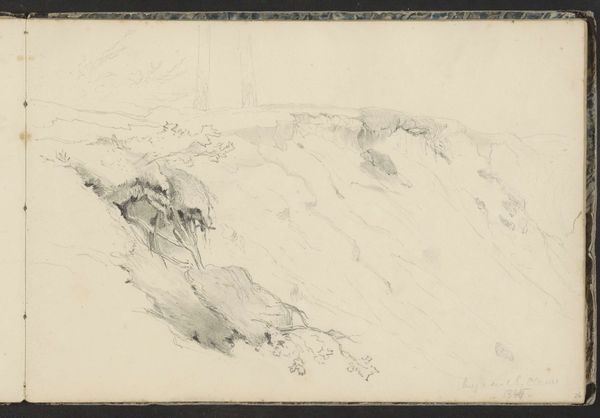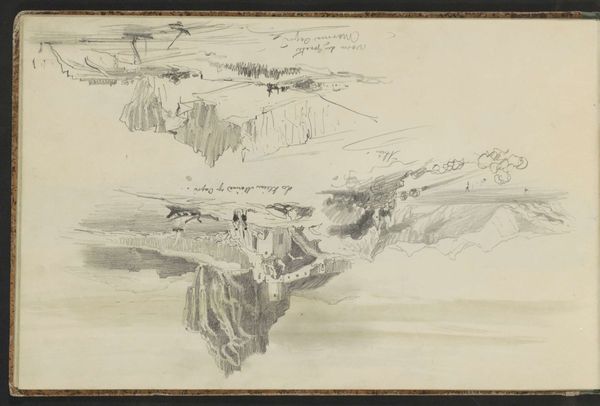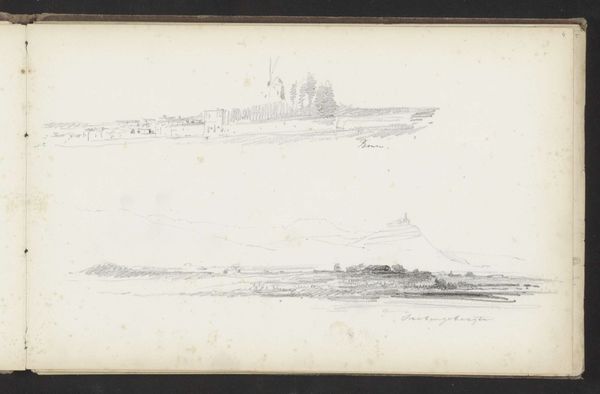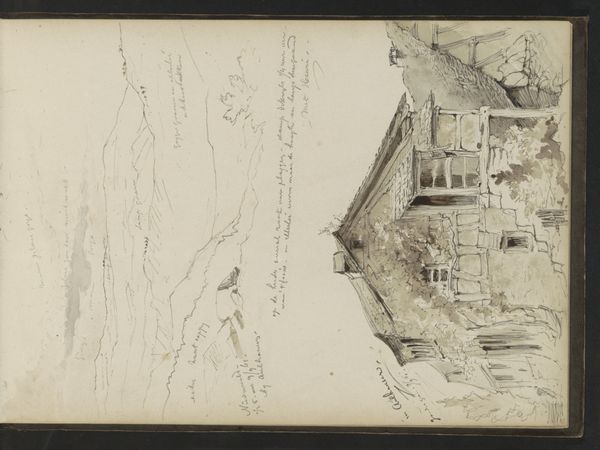
Gezicht op Niederwald en een ruïne van een klooster bij Aulhausen 1861 - 1869
0:00
0:00
Copyright: Rijks Museum: Open Domain
Curator: Johannes Tavenraat’s "Gezicht op Niederwald en een ruïne van een klooster bij Aulhausen," dating from the 1860s. It's a landscape view rendered in pencil and watercolour, currently held at the Rijksmuseum. Editor: Oh, wow, it feels immediately... wistful. The pale tones and delicate lines give it this air of faded grandeur. It's like a memory of a place rather than a direct portrayal. Curator: Precisely! The ruins tap into that Romantic fascination with the past, particularly the medieval era. Ruins became powerful symbols, you know, of the transient nature of human achievement against the enduring force of nature. Editor: Nature is definitely front and center. Even with the ruins, the landscape, with those mountains fading into the distance, just overwhelms everything. There's a real sense of the sublime. Makes you feel tiny, right? In a good way. Curator: I think that’s spot on. And note how Tavenraat uses the watercolour to create a hazy atmosphere, blurring the lines and details. It invites contemplation on themes like loss, time, and the inevitable decay of civilization. Remember that the romantic era was one where nature became the primary venue for accessing the divine, a refuge in an era marked by industrial and political revolutions. Editor: Makes you wonder about the audience back then. Was this meant as a somber reflection on societal shifts or maybe even a quiet escape from them? Curator: Probably both, in a way. Landscape art often serves as a mirror, reflecting the anxieties and aspirations of its time. The emerging urban elite needed antidotes in the art, invitations to leave civilization in order to save it. Editor: It's subtle, but that tiny splash of pale blue, up near the top of the mountain—is that intended to catch the eye and lift your vision out of the dark remains? Curator: It certainly directs your eye upwards. That's clever composition. Tavenraat, while working within established Romantic tropes, is still guiding our gaze, controlling the emotional narrative. It creates a sense of hope within the ruin, showing, perhaps, renewal. Editor: So, while it's about decay, it also hints at the enduring power of the natural world and possibly, yeah, even a chance for a new beginning after collapse. Interesting. Curator: It makes you consider our relationship with both history and nature—are we doomed to repeat cycles of rise and fall? Or can we learn to live in harmony with the world around us? That to me is the poignant, timeless message embedded in the brushstrokes. Editor: Well, it has certainly put some stuff in perspective. I think I'll go take a walk. Curator: Perhaps to observe the subtle dialogue between decline and resilience reflected in today's landscape? A fitting way to end.
Comments
No comments
Be the first to comment and join the conversation on the ultimate creative platform.
